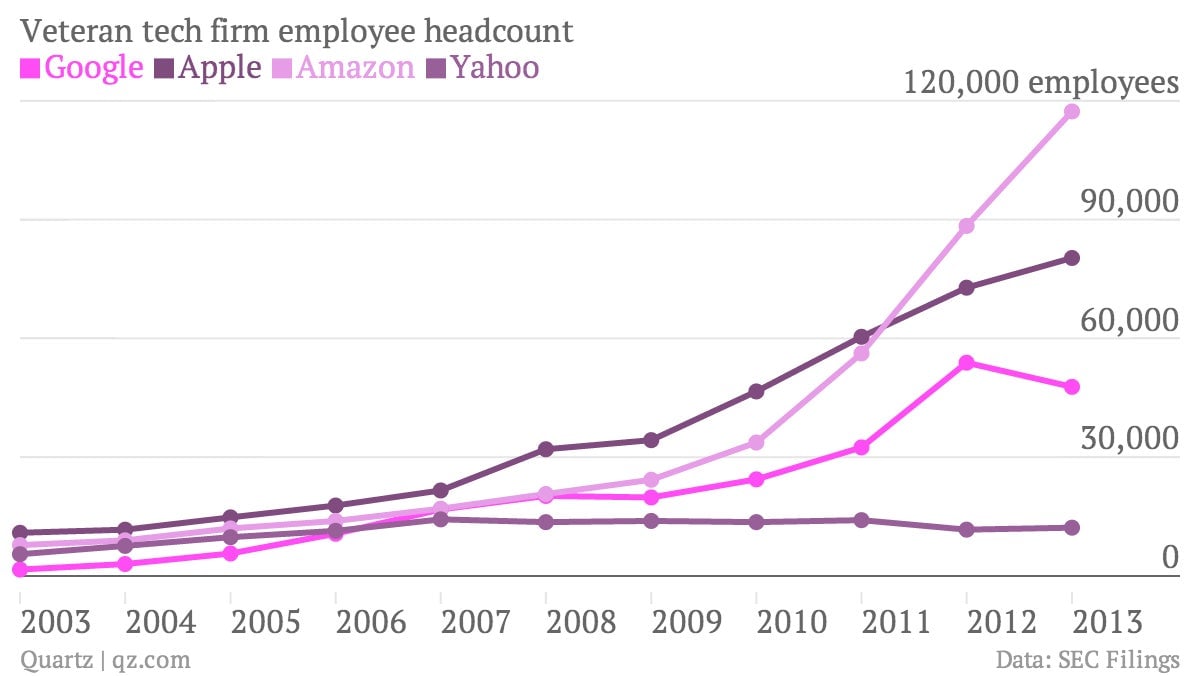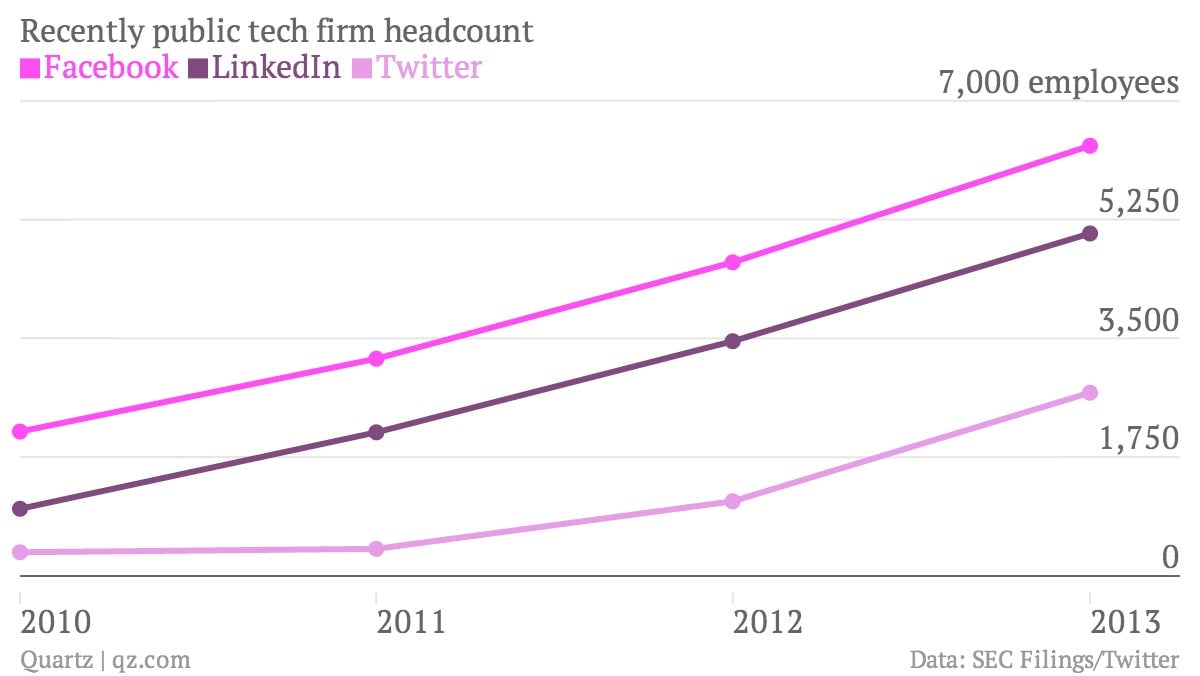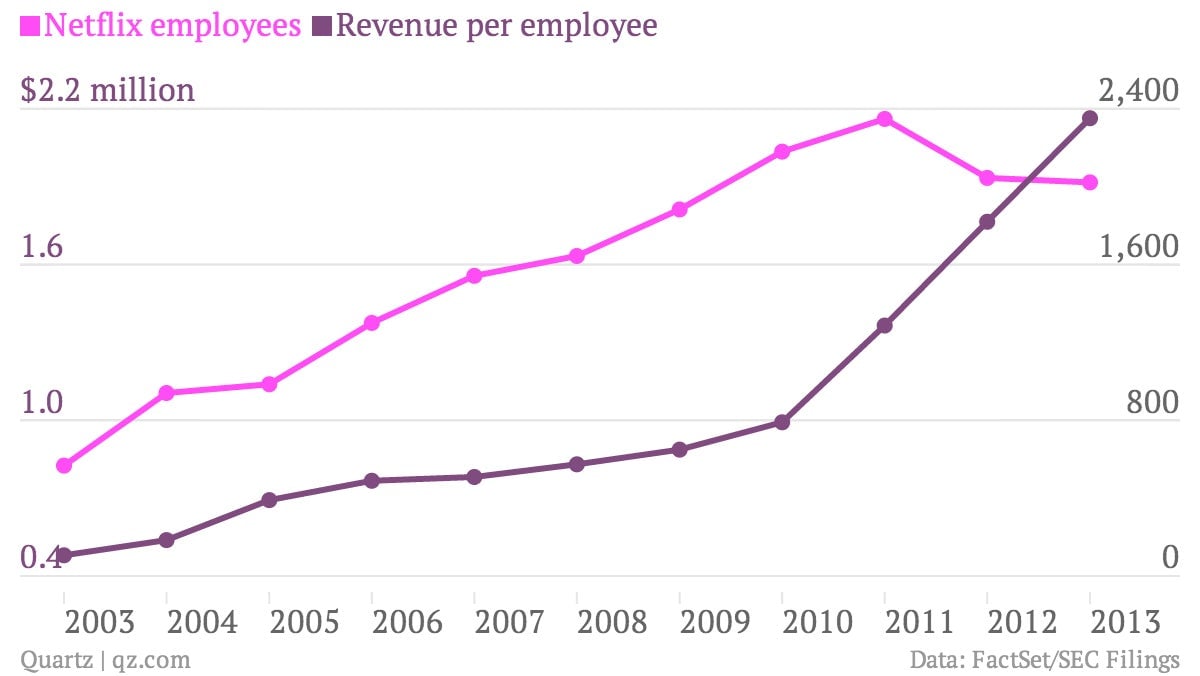Most tech companies go on hiring binges, but Netflix stays lean
For the first years of their existence, tech companies tend to be tiny. The recently acquired WhatsApp had only 55 employees when Facebook bought it for $19 billion. Facebook only passed 1,000 employees in 2009. But once they start to hire, as has happened in the past few years, these companies get really big really fast, adding multiple thousands of people every year.

For the first years of their existence, tech companies tend to be tiny. The recently acquired WhatsApp had only 55 employees when Facebook bought it for $19 billion. Facebook only passed 1,000 employees in 2009. But once they start to hire, as has happened in the past few years, these companies get really big really fast, adding multiple thousands of people every year.
These firms weren’t exactly stagnant in the early 2000s, but their recent growth has been staggering:

Google, Apple, and Amazon grew headcount pretty consistently for years, then exploded in the last few years. Revenue at those three companies has grown massively alongside their employee numbers.
A few necessary notes: A majority of Amazon’s employees work in the company’s warehouses. The company, planned to hire 70,000 seasonal workers last year, and its annual filings reveal headcount in December. So the average employment level is somewhat lower. But same day delivery and grocery efforts could see it climb significantly higher.
About half of Apple’s workforce (42,800 out of 80,300 as of its most recent annual report) works in the company’s retail arm. Google’s headcount jumped after it added 15,000 plus employees in its acquisition of Motorola Mobility in 2012, which has been sold to Lenovo. The most recent figure for employees at Google itself was 46,170 as of March 31.
Moreover, the more recent set of high-profile companies to go public obviously doesn’t have the same headcount, and may never reach the numbers Apple and Amazon have because they don’t handle retail or delivery.
But that doesn’t mean they aren’t starting to scale up rapidly and impressively in their own right, frequently growing by more than 50% every year:

Not every company scales up to adding a few thousand people a year. An interesting outlier is Netflix, which has kept its headcount relatively constant even as it gets more and more profitable, despite having been public for more than a decade.
Netflix’s streaming video business model allows it to scale without adding all that many people. Its consistent headcount and profit-per-employee numbers are notable. The big expense is content, in a space that’s getting more and more competitive. The left axis below shows revenue per employee, and the right, headcount.

Tech is projected to be one of the most rapidly growing industries in terms of job creation in the US for the next decade.